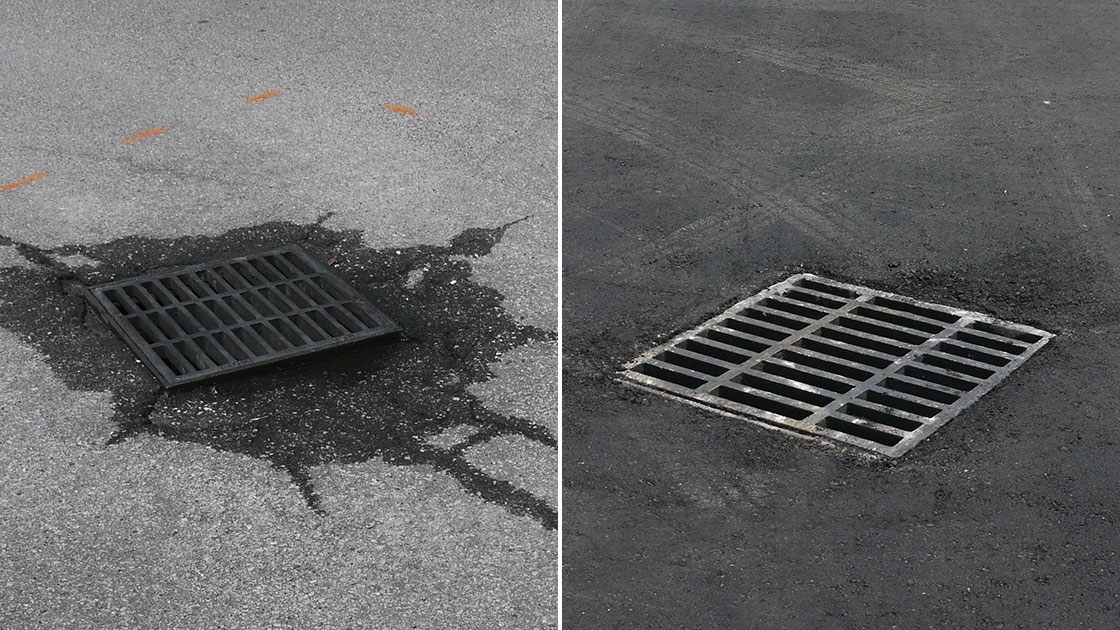Patching Q&A
What types of patching should I consider?
Surface Patching
Surface patching is the removal of asphalt and replacing it with new, hot mix asphalt. This can be completed if the sub-grade has not failed.
One method is saw-cutting and removing damaged asphalt to sub-grade and replacing it with the new, hot mix asphalt.
Milling may be another alternative if there is sufficient surface area to be repaired.
Full-depth patching
Full-depth patching involves completely removing the pavement and its base and then rebuilding the asphalt, which can be completed in different processes. A sign you may need this method is the appearance of alligator cracking.
Alligator cracking is a common occurrence. It is a sign of distress in the asphalt pavement and is usually characterized by the interconnecting cracking that resembles the hide of an alligator. Alligator cracking is often an indication of a sub-base failure, poor drainage, or repeated overloading.
Prompt repair of alligator cracking is important to prevent further damage, premature asphalt pavement failure, and costly future restoration.
Skin Patching
For low, depressed areas where the underlying base is structurally sound, skin patching is a viable option for repair. This is also a good method for smaller areas needing repairs.
With skin patching, the area is cleaned of debris and then a tack coat is applied to the asphalt pavement. New pavement is applied, compacted, and blended in to correct the depression.
Skin patching minimizes the down time for clients and is cost-effective.
Infrared Patching
This is a great process, but cannot be used for every situation.
Infrared patching is an effective and cost-efficient means of pavement repair. Unlike other patching methods, infrared asphalt restoration is a permanent repair solution, creating a seamless patch in your pavement and preventing water damage.
This method heats existing asphalt, allowing it to become hot and pliable. The older surface becomes a hot liquid and blends directly with fresh asphalt that is mixed into the existing pavement. The area is then leveled and compacted to produce a smooth finish.
Infrared patching is a good solution for potholes, water puddles, catch basins, oil spots, curb failures, and other unleveled asphalt pavement.
It creates no waste products and is also a clean method of patching as the existing pavement is recycled into new pavement, making it an environmentally sound solution.
